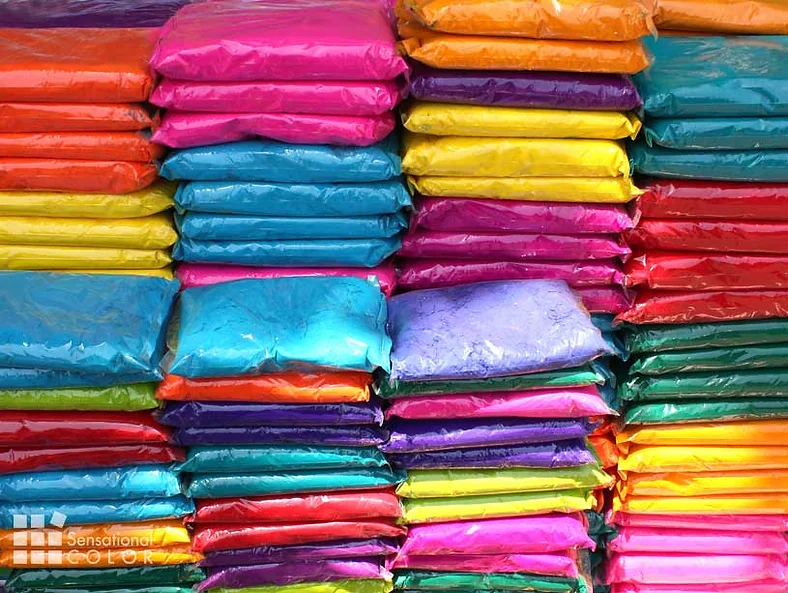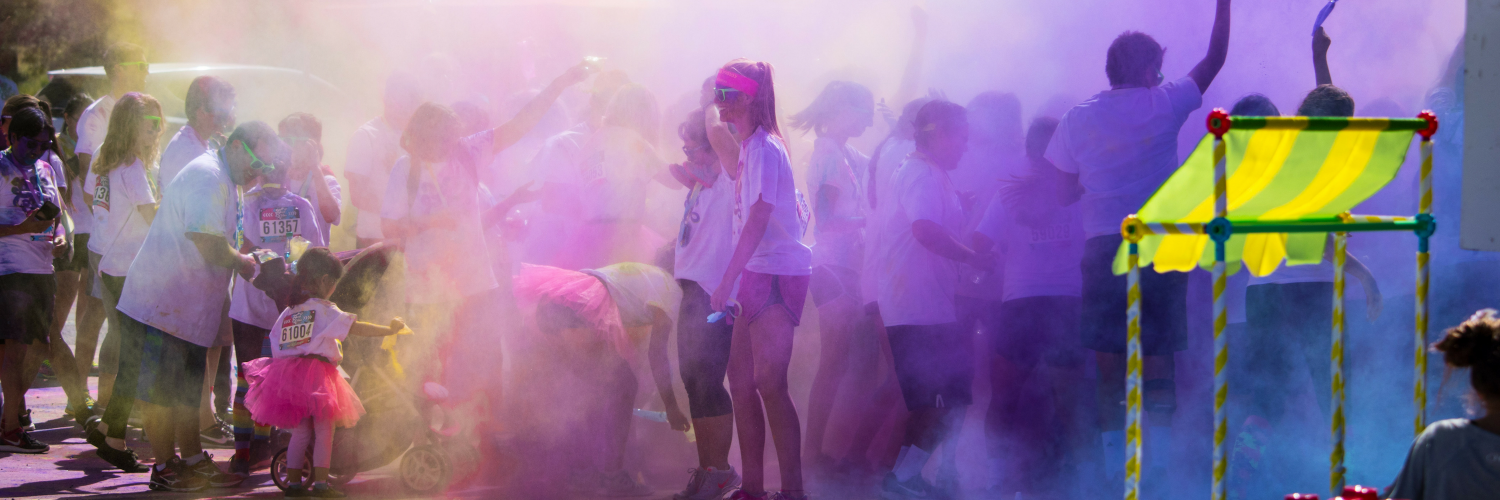
Color and variety are synonymous with Indian culture, beliefs, and way of life. A country steeped in traditions, India charms and bedazzles all her visitors with a kaleidoscopic rendezvous.
Every street, every city, and every corner has a story to tell all you have to do is listen. But it is tradition, culture, and celebrations that truly bring this country together. One of the most symbolic in the country is called “Holi Festival Of Colors.”
This year Holi began on Sunday, March 12th and The Atlantic has posted some amazing images of this year’s festival from India, Nepal, Pakistan, and Sri Lanka.
Holi The Festival Of Colors
A festival that celebrates the victory of good over evil and a celebration of the arrival of spring and harvests to come. It’s the festival of colors, emotions, and happiness. And what better way to express yourself than with the vibrant colors of the rainbow?
The central ritual of Holi is the throwing and applying of colored water and powders on friends and family, which gives the holiday its common name “Festival of Colors.” Come Holi, and the country is painted in mesmerizing hues of blues, yellows, magentas, greens, violets, and more. Clouds of colors dancing in the wind carry the message of love and happiness across walls, neighbors, and hearts.
Brightly colored powders are the mainstay of Holi, during which men, women, and children carry powders and liquid colors to throw and smear on the clothes and faces of neighbors and relatives. While dry powder colors are called “gulal,” colors mixed with water are called “rang.” Tables with bags of colors are lined up as neighbors and family await the others to enter the grounds. It’s a day to celebrate and let go-loud music, local brews, and fun-filled chatter are all essential elements of the celebrations.

Plastic packets containing colorful powder for the traditional celebration of Holi
But most importantly, Holi is the day when you will see the streets and homes of India doused in almost every color imaginable. Each color has significance, religious or otherwise. And there is a color for almost every occasion, moment, or celebration. Each color symbolizes a force in life, and thus color and life are inseparable.
While the most popular colors are the brightest — blue, yellow, red, purple, pink, and green-there are colors that are conspicuously absent, traditionally. These include black and white.
Color Symbolism Of Holi
Though white symbolizes a sense of purity, it is also a color of mourning. Widows in India, unlike in their western counterparts, retire to a white-only dress code. And while black is considered ugly, evil, and undesirable, it is relied upon heavily to ward off evil, as is evident in the ceremony of putting a black dot on a new-born baby’s face to ward off the evil eye.
During the early days, the “gulal” colors of Holi were made at home using flowers of the tree, otherwise called the “Flame of the Forest.” The flowers, once plucked, were dried in the sun and then ground to a fine dust. The powdered dust, once mixed in water, gave way to the most brilliant hue of saffron-red. The saffron-red pigment and colored powdered talc called “aabir” were the mainstays at Holi celebrations, long before the chemical colors of today.

A couple covered in colors from the Holi Festival
Squirting colored water, throwing colored water balloons, and throwing fistfuls of powdered colors at friends, family, and even strangers is not considered out of place or offensive and is, in fact, a part of the festival. Children and teenagers line up at strategic vantage points, armed with buckets of colored water and little water balloons, waiting to attack unassuming passers-by.
Every color means something special in the Indian psyche. Red, for instance, is a mark of matrimony; brides in India wear red most often at their wedding since it symbolizes fertility, love, beauty, and, most importantly, is a sign of a married woman. It is considered custom in the ways of Hinduism to wear red powder-Kumkum on the peak of their forehead. Most often considered the prerogative of a married woman, a red dot is worn between the eyebrows to symbolize blissful matrimony.
Yellow is yet another important color in the Indian psyche. Yellow is almost synonymous with turmeric, an ingredient of great importance at auspicious functions across religions. It is perhaps revered more so because of its medicinal use right from the ancient times. Turmeric is used even today for the treatment of inflammatory and digestive disorders.
Other colors that tease the skies on Holi include blue, the color of the revered god in Hinduism, Lord Krishna. Green symbolizes new beginnings, harvest, and fertility, and is also the sacred color of the Muslim community in India. Saffron is often associated with Hinduism, piety, and strength.
Today, keeping pace with technological advance, the primary colors used initially have been supplemented by metallic colors and various unimaginable shades and mixtures. But the spirit of the festival remains the same. It cuts across all classes, castes, and religions and brings people together. Together, they celebrate the onset of spring by filling their day and life with the colors of joy, prosperity, happiness, and peace.
The colors of India, though diverse, speak the language of its people, from the red and ochre walls of village huts to the pristine white of the Taj Mahal. Color, art, and culture in the subcontinent have surpassed all odds and continue to hold the country together in a spellbinding tryst of hues. Holi is a festival celebrated in great revelry and belief, where citizens of the country paint the skies and their surroundings in the magnificent colors of joy.






